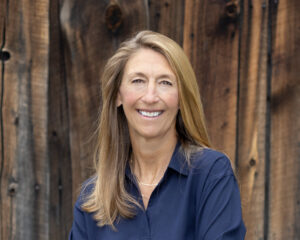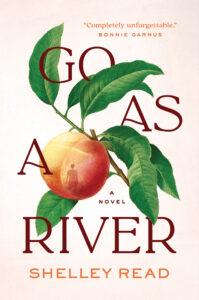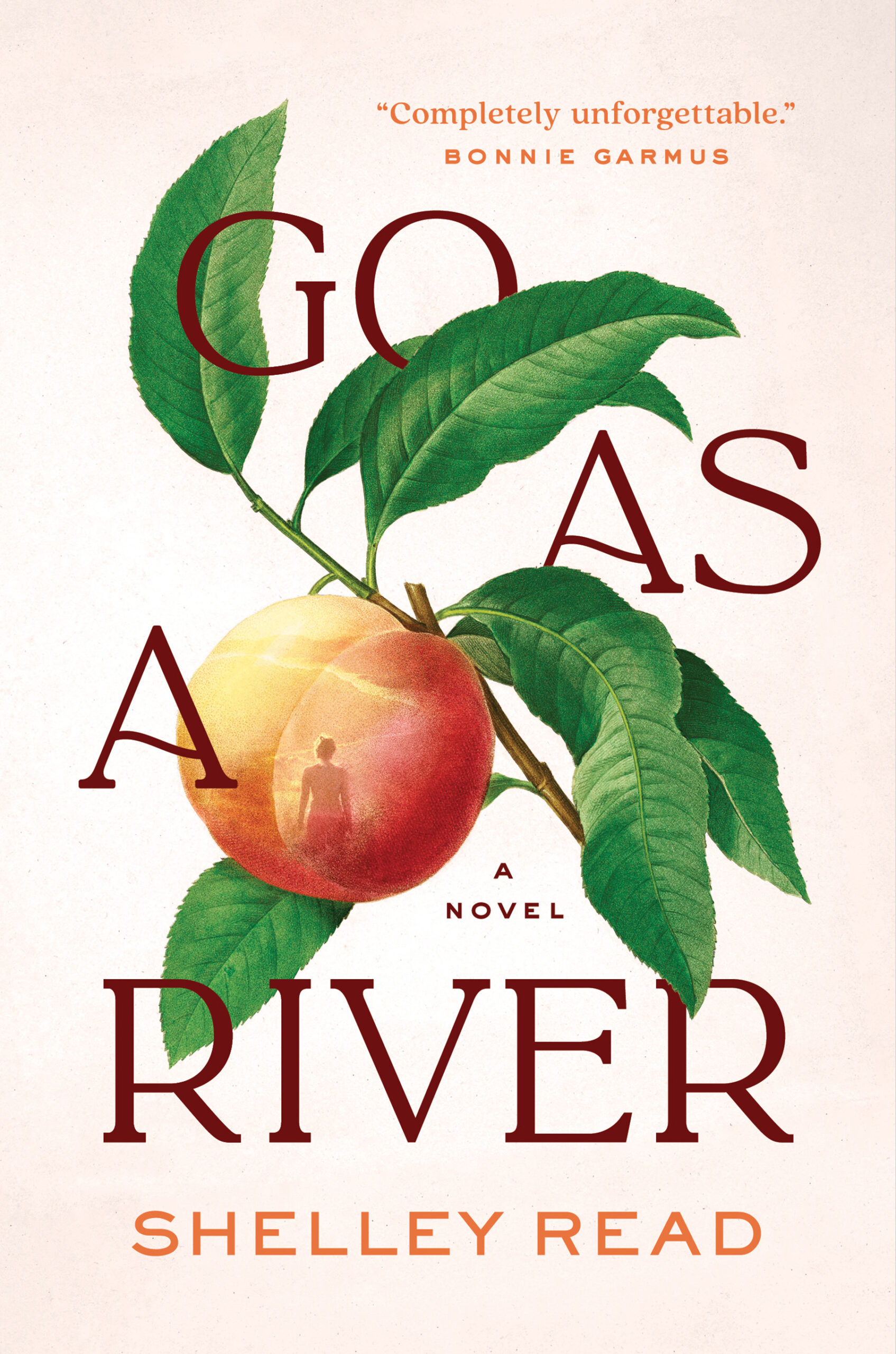A river runs through her
Author Shelley Read on Go As a River’s international success and the power of home
Author Shelley Read on Go As a River’s international success and the power of home
What a delight to discover a new, bestselling author in our own back yard.
Such is the case with Shelley Read, Colorado western slope resident and writer, whose debut novel, Go As a River, has become an international blockbuster.
“I never expected it,” she said in a recent telephone interview. “But I loved my main character, Victoria Nash, so much [that] I wanted to tell her story to the best of my ability.”
Published in February of 2023, Go As a River has already been translated into 34 different languages. Perhaps it shouldn’t come as a surprise, for Read, aged 58, has spent nearly 30 years reading and teaching writers, surveying and teaching about the environment and working as a senior lecturer at Western Colorado University. She holds degrees in writing and literary studies from the University of Denver and Temple University’s Graduate Program in Creative Writing and was a Dean’s Fellow in the University of Denver’s PhD program in English. There she edited the school newspaper and newsletter and now is a regular contributor to Crested Butte Magazine and Gunnison Valley Journal.

Shelley Read
On a recent mid-summer morning, from opposite sides of the Rockies, Read and I shared distant cups of tea as we discussed the hubhub of interviews, presentations and book tours that have her reeling. She has traveled throughout the states and Europe where she finds stacks of her book in bookstores and airports everywhere. In June, however, she was attempting a pause, finding time for home, family, friends and relaxation in the hills she calls home.
A fifth generation Coloradoan born along the Front Range, Read is now a 30-year resident of the Gunnison Valley, a lifetime hiker and backpacker with a sincere appreciation for the Gunnison area river valley and the mountain ranges nearby.
Read loves “places you can only get to with your feet” where she does her clearest thinking, she told Florida’s Spotlight magazine. That means living at 9,000 feet and climbing nearly all the 14,000-foot peaks near her home, near where the real town of Iola once existed but now lies under the Blue Mesa Reservoir, the historic event at the heart of her novel. As a child swimming in the waters of Blue Mesa Reservoir, Read found it curious that three former towns lay under the water: Iola, Sapinero, and Cebolla. That curiosity, many years later, spawned her novel.
The beautiful, mystical Colorado settings of Go As a River have enchanted readers, as have the characters, and the book’s post-war setting, Read’s use of language and the intriguing thematic tapestry she weaves. In the prologue, Read asks readers to “Imagine a town silent, forgotten, decomposing at the bottom of a lake that once was a river. If this makes you wonder whether the joys and pain of the place wash away as the flood waters rise and swallow, I can tell you they do not. The landscapes of our youth create us, and we carry them with us, storied by all they gave and stolen in who we become.”
Readers will find that Read entwines lovely language with dazzling farm and mountain settings and fateful visions of a home that’s not to last.
“It’s about displacement, of the people in a town and also the Native American experience through the character of Wilson Moon,” Reed said. “With the book taking place in this part of Colorado, I knew I had to include the indigenous experience, although it’s not entirely my story to tell and [was] the hardest part of the book to write.”
A farm and household are more than enough for Victoria Nash to manage. Her mother has died, her battle-scared uncle is an unhappy trial, her brother a derelect misfit and her father a hard-working peach farmer. From the first page however, Victoria’s fascination for an itinerant indigenous boy, Wilson Moon, becomes love at first sight. What follows is a plot of discovery, love lost, departure from home and an improbable but successful orchard relocation. Victoria steps through her fears before starting life anew.
“I put Victoria through a lot in the novel, but she sprang not only from a creative mind but also from the heritage of resilience gained through the history of women’s hard lives,” Read said. “They crafted homes and survived living in an often-unforgiving land.” Victoria, who must ultimately find parents for her newborn son, return to manage the family household and struggle through caring for those she loves up to their deaths, works earnestly to do right. The 1965-1966 creation of Blue Mesa Reservoir, Read’s childhood swimming hole, provides remuneration to relocate Victoria’s home and the family orchard of notable Nash peaches.
Much of Victoria’s character is reflected in Read’s life working multiple jobs, helping to build her home in the Valley and raising a daughter and son, Avery and Owen, not surprisingly named for favorite mountains in the region. Like many one-day-I’ll-write authors, for years she accomplished little writing, seizing scraps of time in life’s margins to be an author. When she finally settled down to write Go As a River, the process took 13 years.
Read acknowledges that living through life’s vicissitudes had an enriching effect for her —and a sort of annealing, or softening.
“Creativity has its own timeline,” she said. “I could not have written this book when I was younger.” In the Alta interview, she said she “didn’t clear space” for the novel until she’d endured a death in the family, her husband’s brain surgery and her own “terrible illness,” experiences that focused her “on what is real and what matters and what does not,” fueling her ambition to “do something new,” something she felt was important. Having taught since 1991, Read took early retirement in 2018 to finish her novel.
Go As a River’s success illustrates the author’s resilience.
“My story of Victoria is very much her becoming herself, and my journey as a writer, is very much me becoming myself. I just hit a certain point in my becoming where I knew I had to honor my creative spirit,” she said.
The labor wasn’t easy nor were the rewards quick. Read wrote, sought an agent, and waited. Sandra Bond, her much appreciated agent, encouraged her as she has other writers, to stare defeat in the face and set to work on another book when the first one didn’t work out. Read weathered “twenty-one of the nicest rejections from large publishing houses my agent had ever seen.” Several publishers suggested revisions before the acceptance call came from Spiegel and Grau.
That acceptance brought a steep learning curve as Read entered the glacial pace of publishing. The book was accepted in 2021, but revisions and the pandemic slowed everything, and the book did not appear until 2023. Since then, Read has been part of more than 200 events, made appearances in 12 states and traveled to ten countries with three overseas book tours. She’s visited dozens of bookstores and “met hundreds of wonderful people and heard from even more,” she said.
Coloradoans may view the story as uniquely Colorado, but Read said she’s had emails from many places, even Korea, saying “you have told my story,” giving the highest compliment an author can be paid.
For her, nature has a universal magic. “The deeper in the wilderness I am, the higher in elevation I am, the happier I am. It is an unforgiving landscape and so deeply humbling,” she told Alta magazine, relaying a quote from the Norwegian philosopher Arne Ness that guides her: “The smaller we come to feel ourselves compared with the mountain, the nearer we come to participating in its greatness.” As Reed explained, participating in that vulnerability and humility is a spiritual endeavor.
Now, the need for peace, stillness and solitude has led her back to the high country to re-center. Read has already hiked more than 100 miles since returning home in early June.
“I poured my whole heart and soul into the novel, just as I did with my teaching and parenting. I have much to show for it, including two extraordinary kids who have become remarkable people,” she said. “Plus, I have become a writer as I thought to be as a child. I can only say that I feel such gratitude for the processes that brought me to this point.”
At work on an idea from long ago, Read hopes to tell the story next of homesteading hardships and successes not unlike those of her own family who settled in northeastern and southeastern Colorado. In the years before that region became a dreadful chapter of the Dust Bowl story, immigrants on the prairie struggled to endure, grow and sustain. Rooted in history and with Colorado at her core, Read will set in place more characters with grit and commitment to a relationship with the land.
“Right now, these characters are strangers. With more research and some time, they will come into focus,” she said. “I might have chapters in the fall and a manuscript perhaps next year. My job now is to tell their story, to not freak out and to enjoy this process.”
As goes the river, she will find a way.
Born in Ohio but a resident of Colorado Springs since 1955, Beverly has watched the city grow. Achieving a BA from what was then Colorado State College with later graduate work at CC and University of Birmingham, England, she began a 16-year teaching career, 10 years freelancing and full-time volunteering, before spending 26 years with the Pikes Peak Library District. Author of the teachers' guide, History of the Pikes Peak Region, she is still surrounded by books and serves as a board member with the Friends of the Pikes Peak Library District.
Click here for more from Beverly Diehl.

